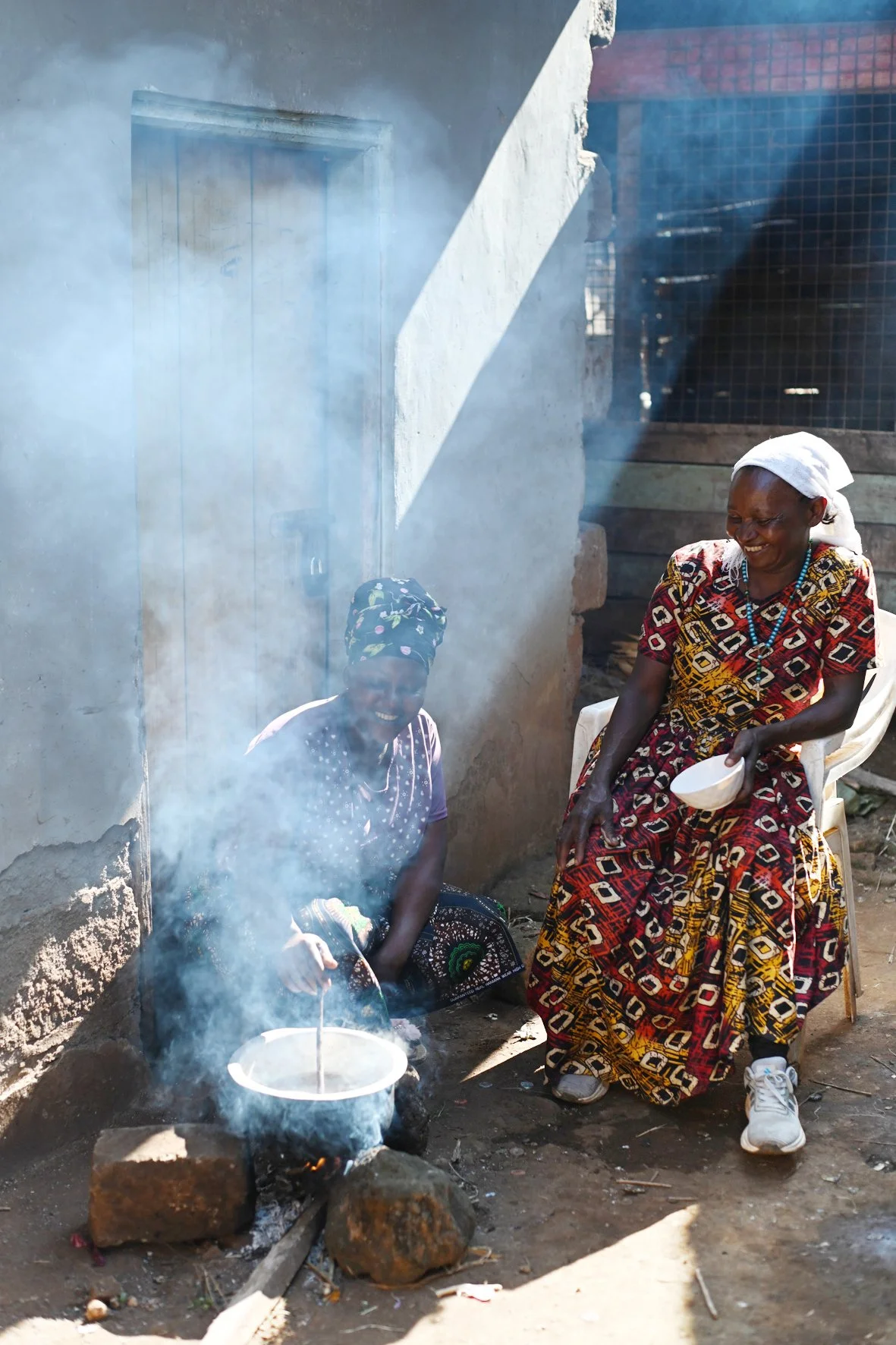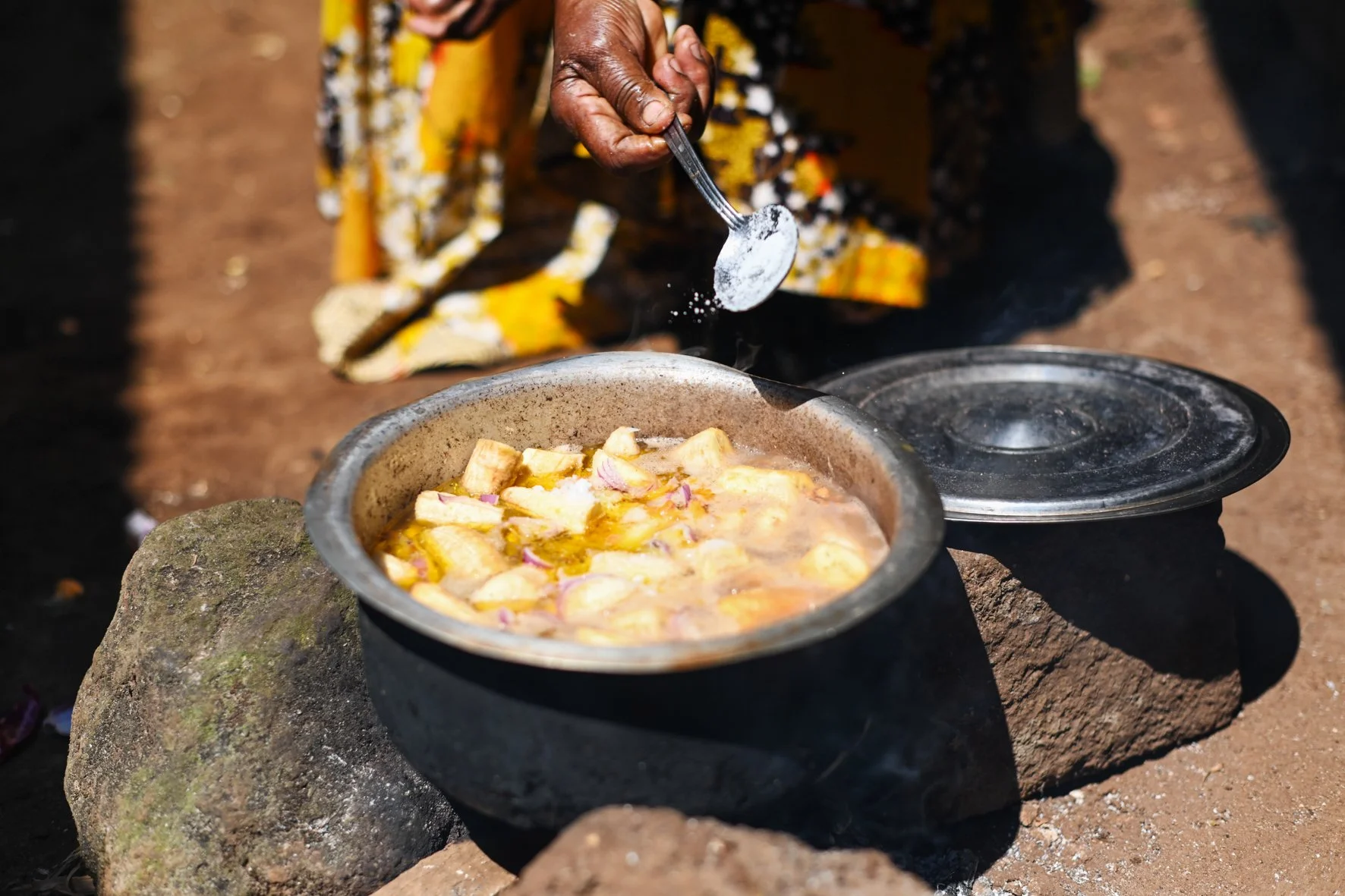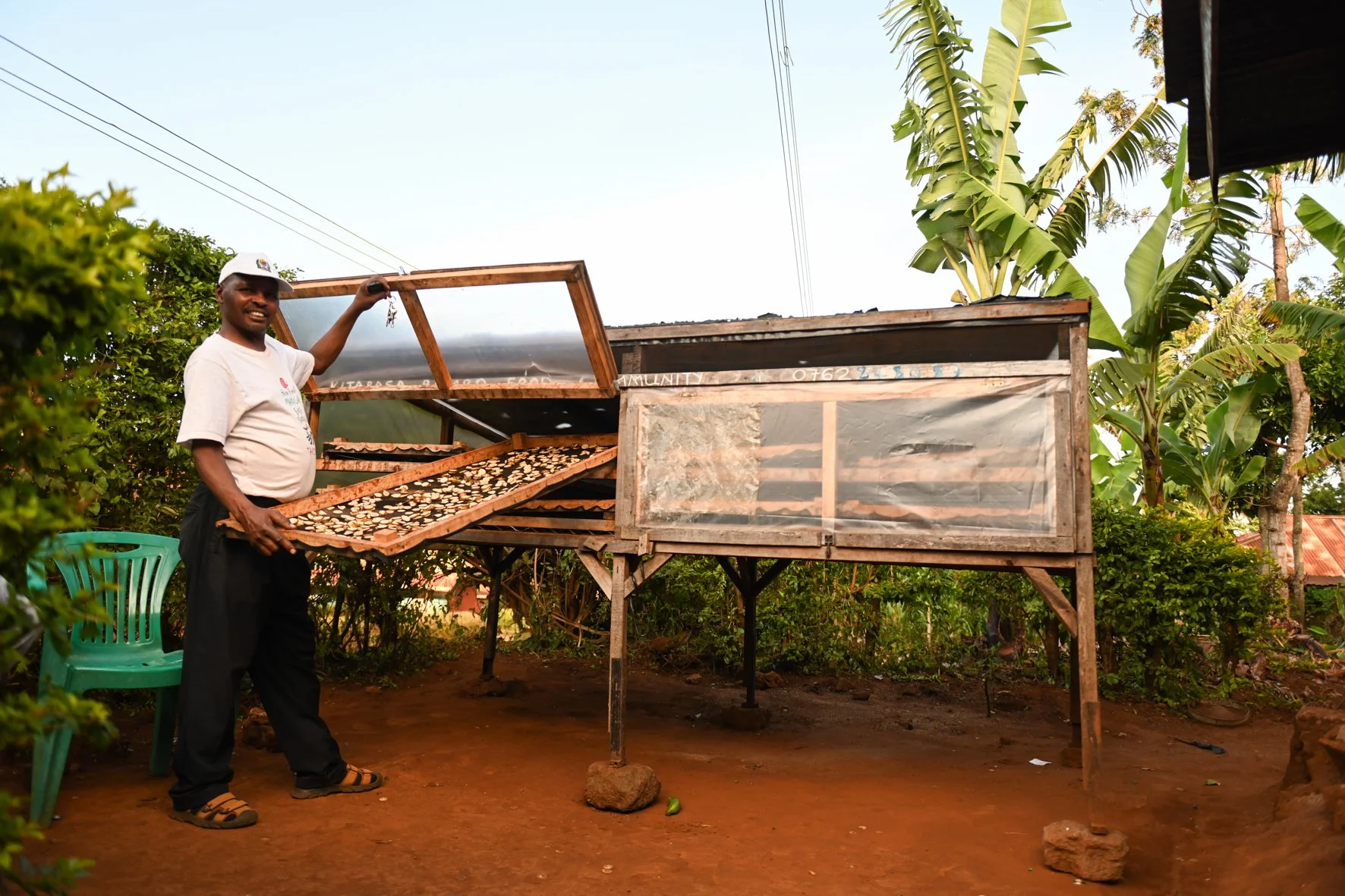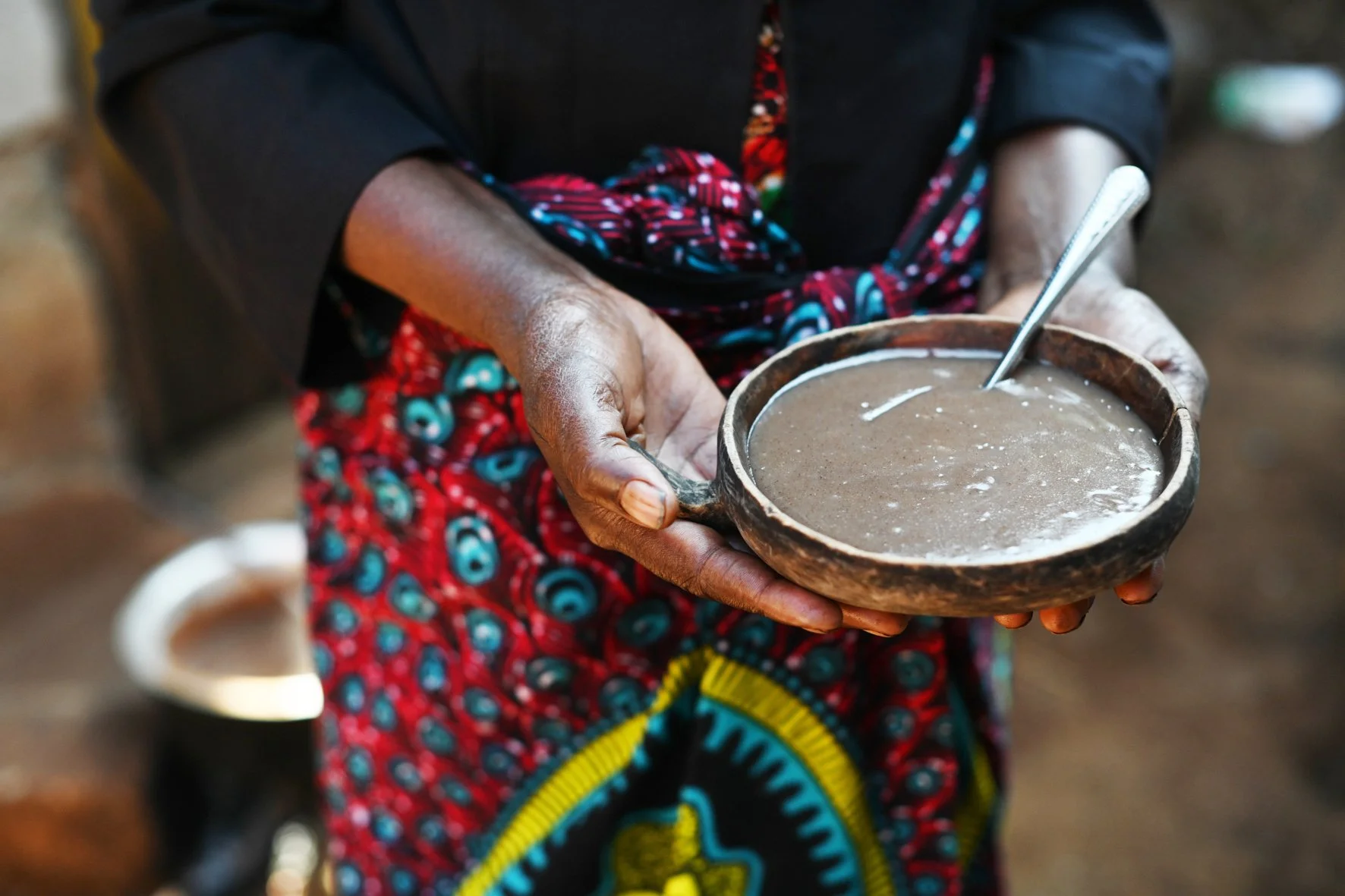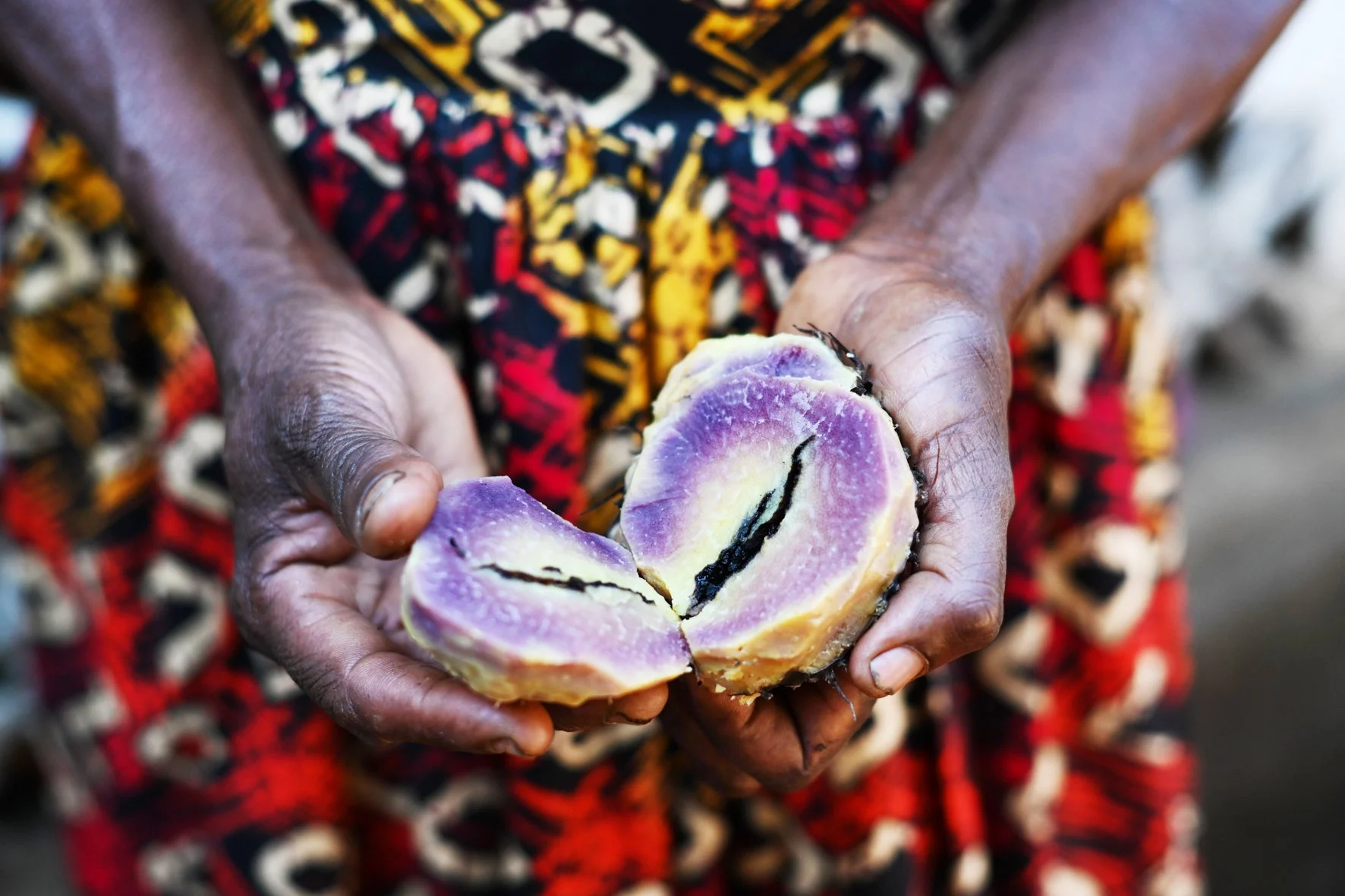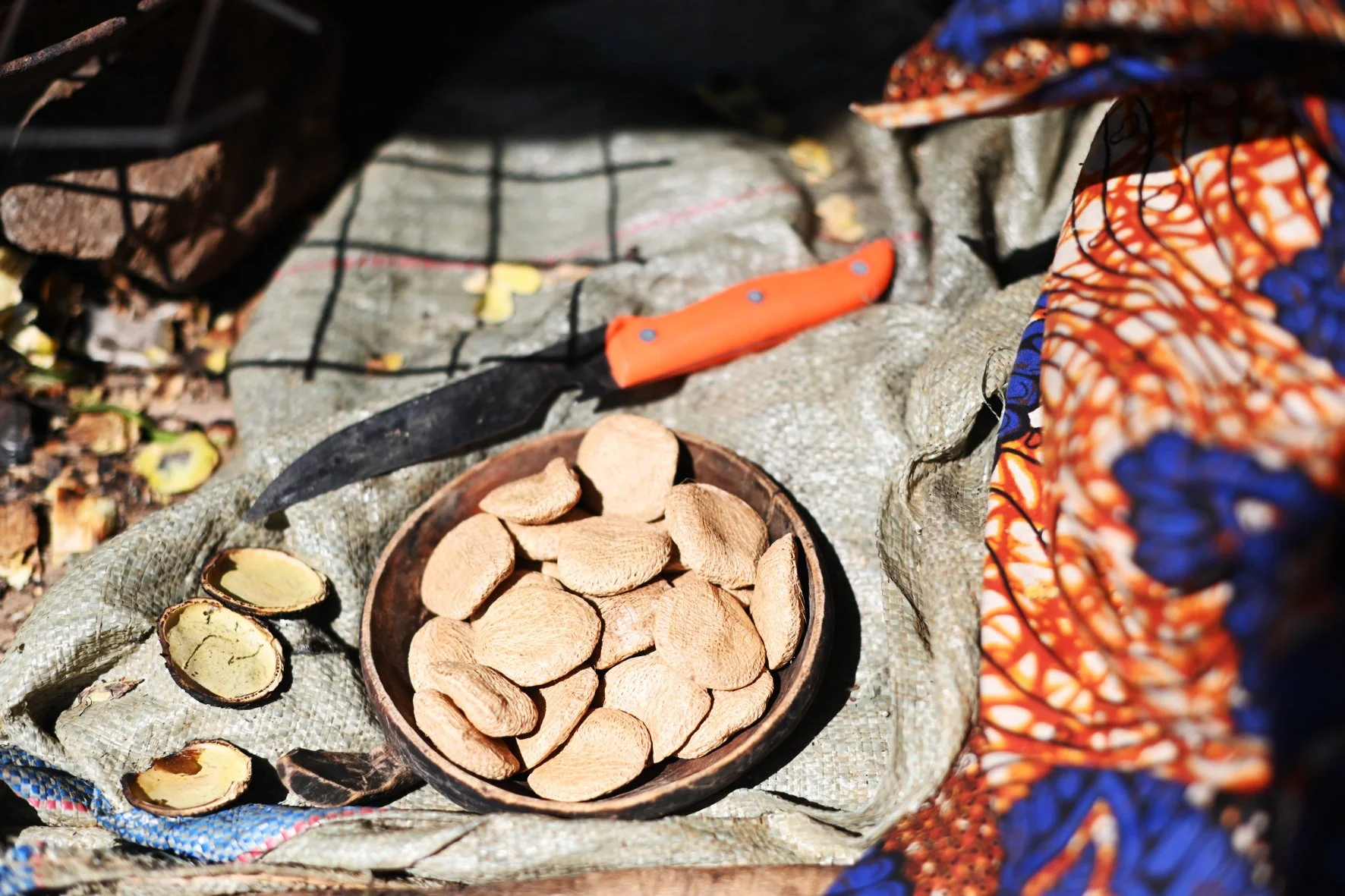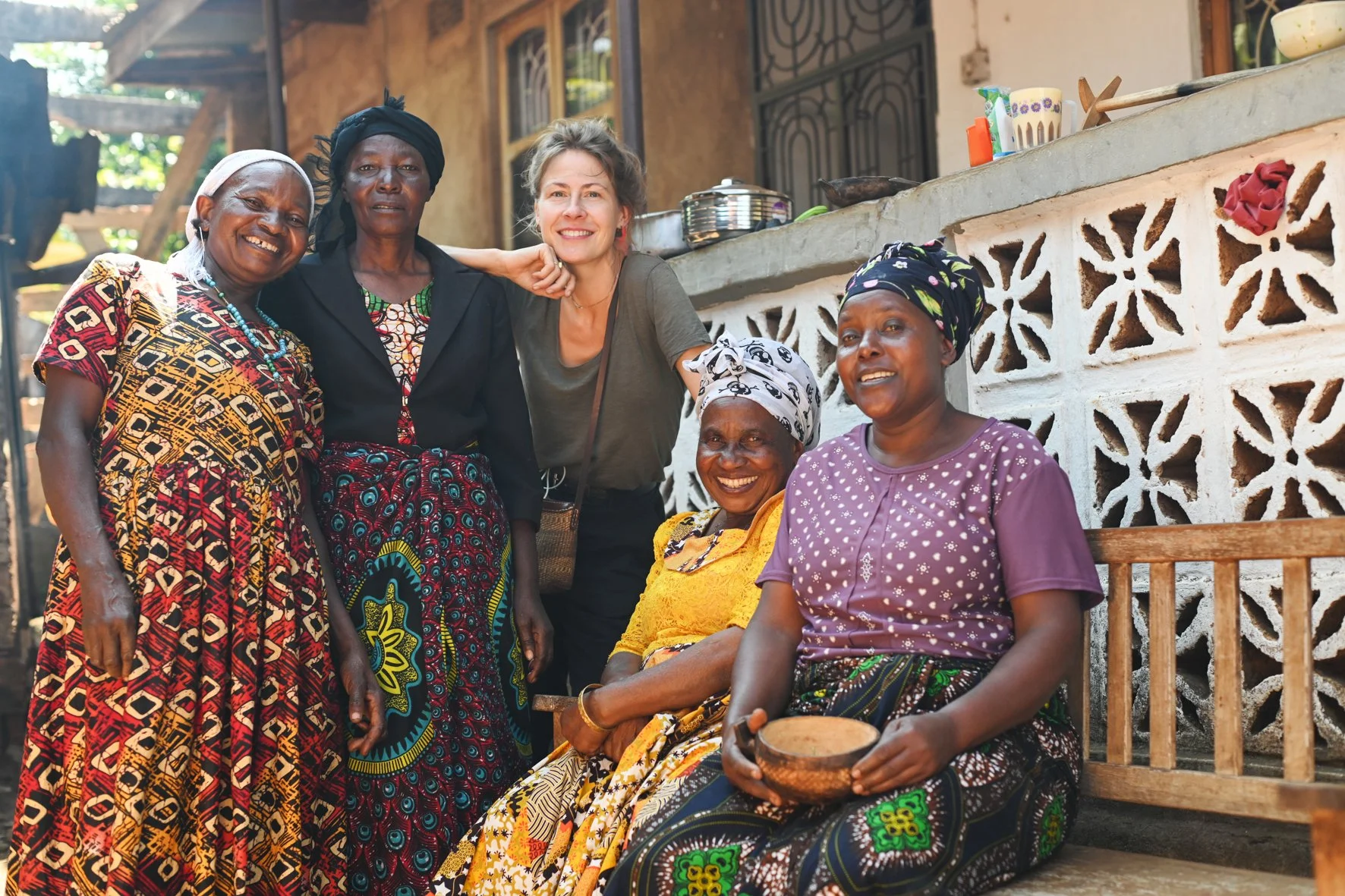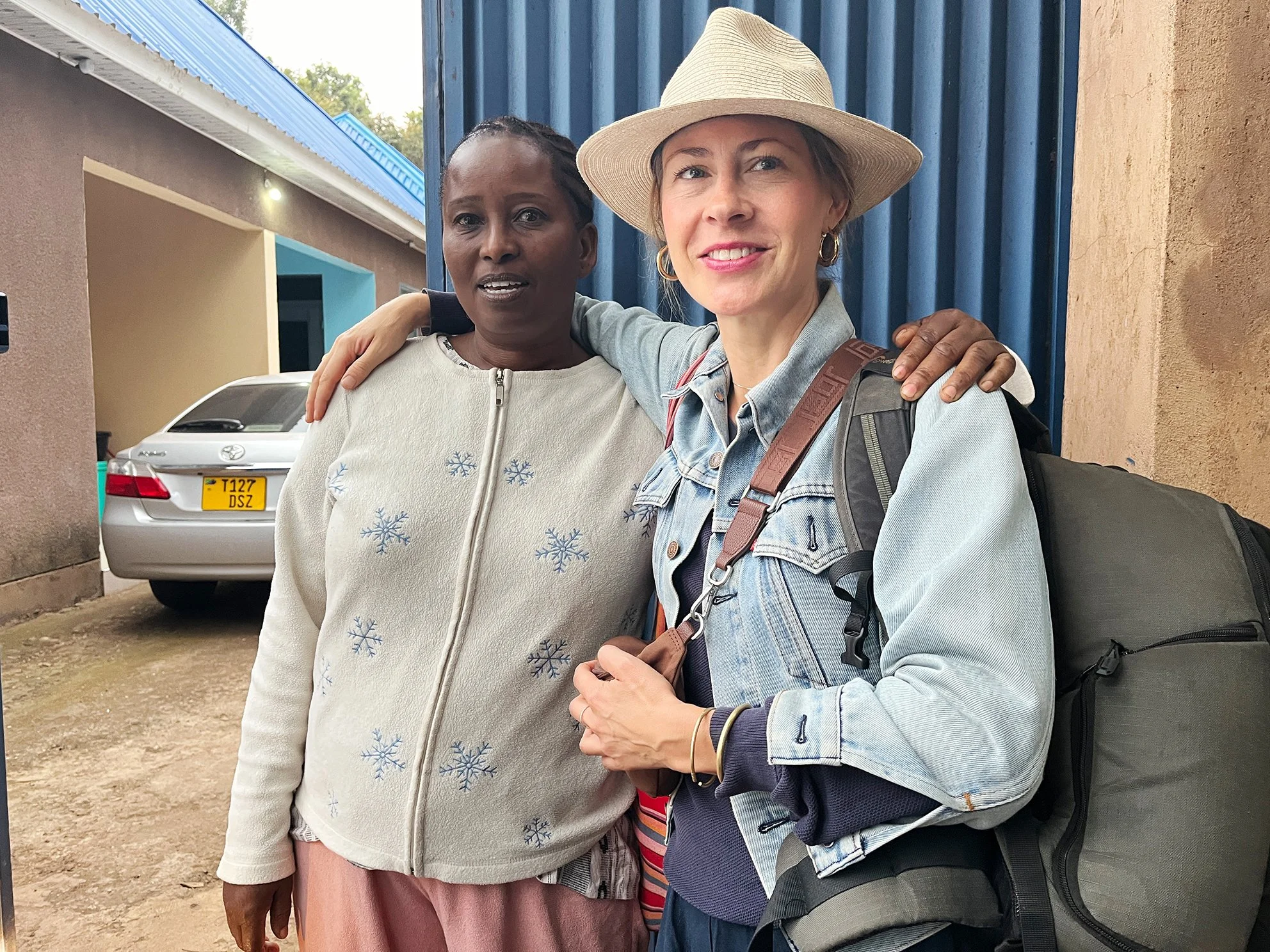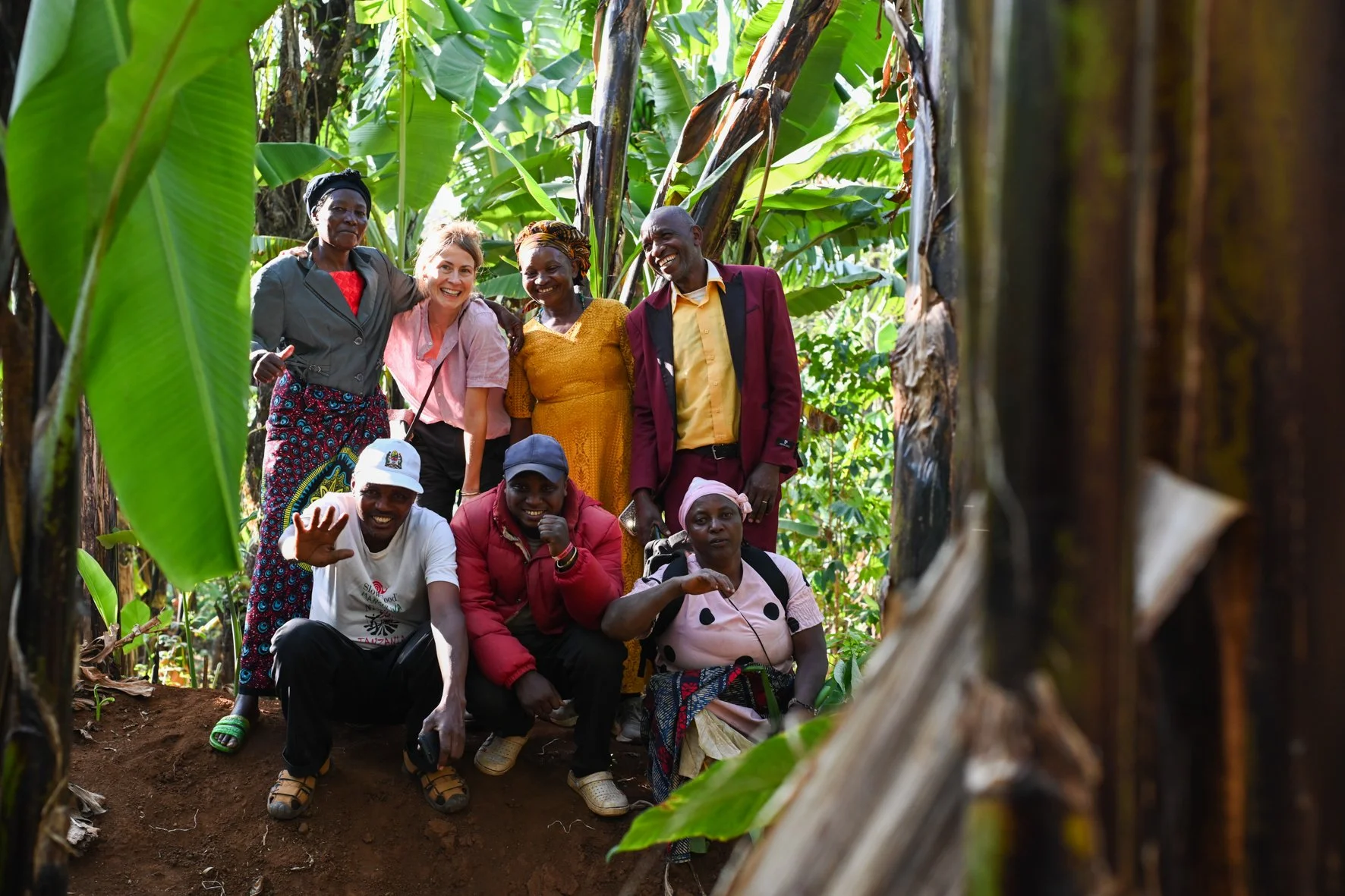COOKING FOR CHANGE
Women of the Kitarasa farmer group cooking indigenous on the slopes of Kilimanjaro.
Today, I want to try to bring you a little closer to the world I encountered in Tanzania. It’s unbelievably exciting when you discover something that could be a piece of the puzzle in creating change. This is exactly how I felt when I cooked with the women of Mangulwa village on the slopes of Kilimanjaro—it was like uncovering a trove of hidden gems.
Every pot we stirred and plate we served was a revival of dishes made from foods that are slowly being forgotten.
I had never tasted any of these foods before. I kept repeating, "Wow, this is amazing," followed by rounds of laughter and more foods to taste.
A stew made with the indigenous Kitarasa banana.
"This is what our elders used to eat, and they stayed healthy, living up to 120 years," Eugenia Ernest Kitali told me as we prepared dishes together from Kitarasa bananas, wild bush greens, oyster nuts, and a variety of air yams! I discovered this group of farmers through the Slow Food website. What excited me was their initiative to create an organic market called the "Mangulwa Earth Market" to promote all these indigenous foods, with a specific focus on the Kitarasa banana.
These farmers practice agro ecology—a term I just learned in the last few months. The methods are rooted in ancient Indigenous practices, blending with modern science today to create sustainable, community-driven food systems. It’s another form of regenerative farming. I love that it emphasizes empowering local farmers by integrating ecological and social principles, aiming to form a balance through the interactions between plants, animals, humans, and the environment.
The indigenous African Air Yam.
Before driving out to meet these farmers, I sat with Avitus Bartholomew Kabisha in a beautiful local café in Moshi, drinking a good cup of quality Tanzanian coffee. He works for MVIWAKI, (The Network of Farmers and Livestock Keepers Groups in Kilimanjaro Region), supporting over 200,000 farmers in the Kilimanjaro region through training and knowledge in agroecology practices. One of those groups is the Kitarasa Group, which he would be taking me to visit.
“For us here in Tanzania, indigenous seeds are not recognized. They’re not sold as seeds; they’re sold as products,” Avitus explained. So if you want to buy local seeds, you have to go to the food market, buy the beans as if you were going to cook them, and then plant them instead. Today, powerful lobbies backed by the government are promoting hybrid seeds as “quality seeds.” These are imported or produced by large companies. What’s unsettling is that the youth are being convinced that local seeds are old-fashioned and that the new way of farming is through planting hybrids and GMOs. There’s even a law prohibiting farmers from trading their local seeds between different regions, which is crazy!
Avitus went on to tell me how they sometimes encounter tension with extension workers who promote these hybrid seeds to local farmers. "Why do you promote local seeds?" they ask Avitus. "We, as the government, are promoting these quality seeds, which is even supporting the farmers through subsidies." These extension workers approach the farmers in their villages as educated people from the city, and farmers—who maybe haven’t finished school—buy the hybrids and GMO seeds, assuming these educated people must know better than they do. Besides the fact that hybrid seeds need to be bought new every year, when you buy into this system, the farmer is entering into a huge value chain. Because that seed only works hand in hand with specific, expensive pesticides, fungicides, and fertilizers. If they don’t buy the paraphernalia and their crops fail, that’s on them, not the seed sellers.
And so begins a downward spiral: losing healthy indigenous foods, farming with chemicals, killing soil microorganisms, and losing vital nutrition for the body.
I was super curious to talk to the Kitarasa farmers group who aren’t giving in to this outside pressure but are instead promoting the actual quality seeds—the local ones! On the first day, we arrived in Mangulwa three hours late, which was very embarrassing for me, especially being German. Somehow, there was a miscommunication about my arrival time, and they had prepared some food, expecting me by midday. Antipas Joseph Shao, the group leader, greeted me with a huge smile and a firm handshake. If they hadn’t mentioned the wait later on, I would have thought I was right on time. We sat around a table while Antipas spoke, and everyone else filmed me on their phones as if I were a superstar. I tried to concentrate on my questions about this “superfood” banana, the Kitarasa, despite being under kind scrutiny.
Joseph Shao drying the Kitarasa Banana.
Farming through agro ecology
Altogether, six farmers surrounded me, though the group actually consists of 29 farmers who passionately promote the Kitarasa. “Why is the Kitarasa different from other bananas?” I asked, genuinely curious. As Avitus translated from Chaga into English, Antipas replied with a smile, “It’s like a herbal banana. It cures a lot of diseases.” “Like what?” I pressed.
“Stomach ulcers, for one. It helps control diabetes, keeps blood sugar levels low, and helps with broken bones, too. It even helps mothers with breastfeeding,” he finished while the farmers around him nodded in agreement. As a nutritionist, I found his answers particularly fascinating because his knowledge comes directly from the community’s daily experiences, not from a textbook. Translated into my language, it would mean: high in fiber, low in glucose, and rich in minerals like calcium and magnesium.
At that point, Avitus chimed in, telling me how his grandfather was bedridden but started walking again after integrating the Kitarasa into his diet. These indigenous medicinal foods, like air yams, oyster nuts, local legumes, and the Kitarasa, are promoted by these farmers at local markets and in schools, purely out of passion for their heritage and culture. And this passion comes, first and foremost, from seeing the health benefits within their own communities.
Kitarasa Banana Porridge
The Local Yam
Indigenous Oyster Nut
And the word is spreading across the country. Doctors from KCMC Hospital, the largest in the region, have investigated the Kitarasa banana and confirmed its healing properties. They are growing it now in their gardens. I’m told that people being treated in other city hospitals for cancer and other diseases are ordering the Kitarasa for a lot of money. The irony is that the reason people stopped growing the Kitarasa was that they weren’t getting as much money from this small banana as they were from the bigger, sweeter varieties. The farmers, unaware of Kitarasa’s health benefits, decided to stop growing it altogether.
Now, sitting here in the Rombo region, holding a package of Kitarasa flour processed by these same farmers, I found it quite expensive at 10,000 shillings (€3.30) per kilogram. In urban areas, it can sell for as much as 60,000 shillings (€19.90).
There’s a lot of market potential for this banana!
Although the farmers have been trained to dry, process, and package Kitarasa themselves, the current packaging methods can lead to mold growth, which shortens shelf life and makes the final product unsafe for consumption. The label is simple, which works for buyers familiar with the product’s health benefits, but it wouldn’t stand a chance against the flashy, professionally designed labels in supermarkets. It’s not enough to just produce a healthy product; the entire value chain must be completed to counter the rising trend of hybrids and unhealthy often imported products flooding the markets.
Local Packaged Kitarasa flour
This is where BODY&SOIL plans to support farmers—by helping them reach the market through the creation of a production cycle from the ground up. In collaboration with RUCID Organic College, we’re starting small: working with schools in the areas surrounding the college on garden and nutrition solutions, developing more nutritious porridges with women, and inspiring youth to recognize the value of their food heritage.
We believe the best approach is leading by example. Our plan is to first develop products that people enjoy, together with the communities, so they can experience firsthand the positive changes in their soil, their health, and their children.
Basically, we’re doing exactly what the Kitarasa farmers figured out: they tried it, experienced the benefits firsthand, and became advocates for change.
Maria Schiffer with women of the Kitarasa Farmers group in Tanzania
Just as I was about to send my journal out, my WhatsApp rang. It was Bella from Tanzania. She was my neighbor and the principal of a school in Moshi. At 43, she is one year younger than me and was diagnosed with type 2 diabetes in her mid-twenties. At that time, she was eating mostly starches—lots of white bread and maize meal—and living a very stressful life.
I had just discovered the Kitarasa banana, so I bought some Kitarasa flour from the farmers for her. I advised her to eat more of it, avoid maize porridge, and include a variety of vegetables and greens in her diet. It wasn’t rocket science advice. Bella called to tell me that since changing her diet the pain in her legs from poor circulation has reduced. For the first time in years, she feels normal! And this is just two weeks ago! In her own words:
"You didn’t waste your time in Moshi. You helped me a lot. Thank you!"
What we grow and how we eat has the power to heal. I hope to see Bella again one day and to help many more people like her through the power of food! This is why I'm doing what I'm doing and I'm not giving up! 🥳 ❤️
Bella and Maria in Moshi, Tanzania.
In the future, I envision that experts and members of BODY&SOIL will have the opportunity to stay with us in Uganda for a short time, become personally involved in the movement, and witness the changes up close. Now I’m going to take a walk around the block and celebrate my successes of today! Thank you for taking the time to read my journal and for joining me on this journey.
Maria
Maria Schiffer with some of the Kitarasa Farmers Group in Rombo, Tanzania.
